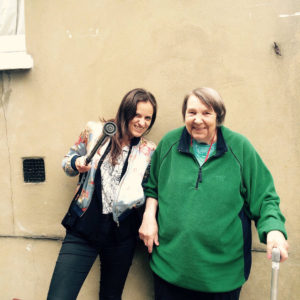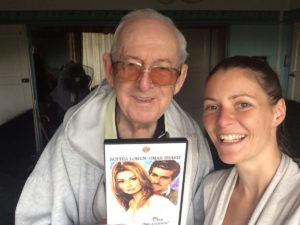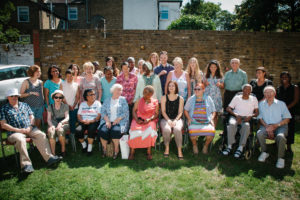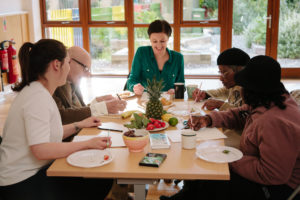Please note: this post is 111 months old and The Cares Family is no longer operational. This post is shared for information only

Nearly two years ago, South London Cares, alongside our sister charity North London Cares, began work on an in-depth evaluation to demonstrate the impact of our model on the lives of the younger and older neighbours who participate in our community networks.
Although South London Cares was still very young at the time – just a couple of months out of the traps – we were building on the experience and evidence of our older sister network above the river, and keen to get straight into learning as much as possible about our work from the very start.
Of course, we wanted to learn what the younger and older neighbours get out of our Social Clubs, Love Your Neighbour and Outreach programmes in a viable statistical sense. We were excited to know more about what motivates people to be involved, and how their interactions locally might add to a sense of belonging, identity and community.
And, crucially, we wanted to know whether our work meets its objectives – of reducing isolation and loneliness, of improving the wellbeing, confidence, skills and connection of all participants, and of bringing people together across social, generational, digital and attitudinal divides.

But because the connections we help support between younger and older neighbours who are bound by geography but who share so much more than that can be extraordinary, we didn't want this to be an ordinary evaluation. We wanted this research to avoid any painting by numbers, and to try to measure the love, time and friendship that goes into those relationships, and to capture something about why our model is different – in human terms, and not just scientific terms.
Two years on, we are thrilled to be able to publish the results of that evaluation.
In short, the study shows that, over a year:
Of course, as with any evaluation, these basic findings come with caveats. The sample was relatively small, and there was a large drop off of people across the year of research. Neighbours' personal circumstances, unconnected to their involvement in the Cares Family's work, may have changed drastically during the research period, for better or worse, affecting the results. And some findings do not offer such a rosy picture – for example some older neighbours report feeling more anxious over time and many still crave people to feel close to.

However, we are really enthused that the top line results published on the Nesta website bring some of that statistical evidence that our model really works. And we are especially reassured that in the detail, and the stories that people shared, some of that magic that we wanted to try to capture jumps loudly off the page:
We're so thrilled that our younger and older neighbours share so much. And we're so chuffed that Renaisi, who conducted this research, did such a wonderful job – sensitive to the needs of the participants, passionate about our mission, and challenging us in new ways.

Alongside these qualitative and quantitative insights, Renaisi have also, in their report and their wider process and culture evaluation, captured the subtleties of the Cares model. We're really grateful to them, to Nesta and the Cabinet Office, and all of the neighbours who participate in the network every day.
You can read the full evaluation report here, and over the coming weeks we will publish some of the key findings through Facebook and Twitter, including more on the development of our model, why we do what we do, and our plans for further evaluations to make those key connections between the value of community and the effect it can have on people's lives.